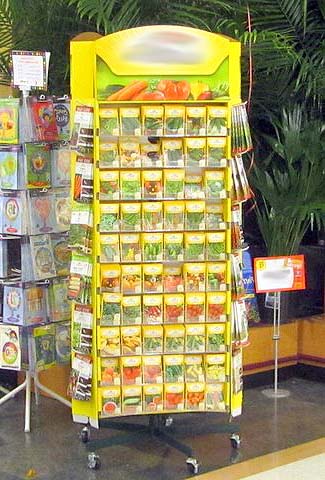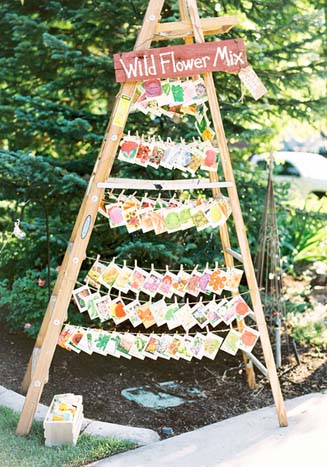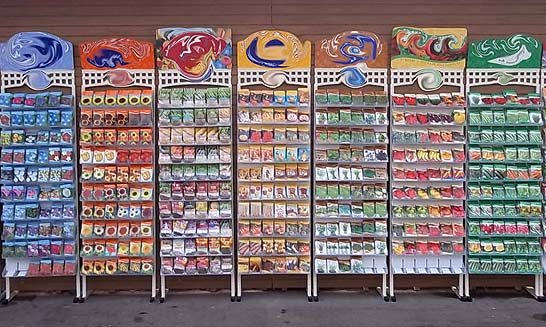Do you know where your packet of seeds has been? Do you know how they have been treated before you buy them? Are you sure they were treated well so that they will be as viable as they possibly can be when you plant them? If you can’t answer these questions then perhaps it’s not your fault that your seeds did not germinate. It could well be that your seeds were dead when you got them.
I am sure that at one time or another you have bought a packet of seeds, planted them, waited and nothing has happened. For many, they consider that they did something wrong, sometimes you do. Some seeds are finicky about their growing conditions. If they need light to germinate and you covered them, then they wont grow. Its always important to follow the growing instructions for seeds to have success. Some seeds are also very particular about temperature, light, moisture and other factors, but a great many for the most part will grow if you stick them in the ground and water them correctly. That is if you have viable seed to begin with. If your seeds were not treated well before you buy them then they most likely wont grow.
Most seeds are fairly tough. They have a protective coating that helps to keep them moist inside and guard them from the rigors of the world. Most have to endure winters outside and hope they have fallen a an area that is favorable for them to grow the following year. However tough does not mean invulnerable. Treating seeds with care and storing them in the best way to keep them viable for the greatest length of time will help ensure that they will grow into healthy plants. Indeed that they will grow at all.
First lets look at the life of a seed in the wild.
It grows on the mother plant, it ripens and then gets dispersed in some manner. It then falls to the ground and waits. In most cases this means waiting though the cold winter months for spring and moisture to arrive so it can hopefully sprout. The seed lays dormant while it is cold. Therefore storing seeds in a cool to cold environment will keep them in that dormant stage for long periods of time. Indeed this is how all seeds are stored in seed banks the Svalbard Global Seed Vault is located high above the arctic circle. Scientists have long known that keeping seeds cold, dark and low humidity will keep them viable for long periods of time. So obviously keeping them under other conditions is not going to be good for their viability.
So where has your seed packet been?
Now let us consider that packet of seeds you might buy in the store. This could be a big box store, hardware store or garden center.
First where is it when you see it? On a rack with lots of other seed packets in a nice warm heated store. It’s stuck up in the air with lots of warm air circulating around it. Is this a good environment for seeds? NO.

How long has it been on that rack?
If you are fast you might be able to get to the seeds when they first arrive on the rack. Then they won’t have been out in the warm store for that long. However most people come to get their seeds long after they have been sitting on that rack. How long have they been there, weeks months? All that time in a warm store.
Where is the rack located?
Good stores will put them far inside the store where the temperatures are fairly even, but I have seen many stores put them in windows where the sun beats down on them during the day heating up the seeds, or in the greenhouse section of the garden center. Is that seed going to be viable when you do plant it? Unless it’s very tough, probably not.
How did your seed packet get to the rack in the first place?
Most likely it came in a truck. Packed in a box. That might be fine but it depends on where that truck has been. Has it been moving through sunny hot climates before it got to your store? It’s possible that box could have been left on the loading dock in the sun for hours, maybe longer getting hotter and hotter. Seeds don’t like that.

How far has it travelled to get to your local store. Or even your online store?
Don’t assume that the seeds you buy are grown here. Most are not. Most seed companies won’t tell you where their seeds come from and their websites often talk about their garden centers or such like but their seeds are not grown here. A large proportion of seeds come from Holland, Germany, Poland and China. Yes, I was surprised too. Often the seeds are travelling very long distances across oceans before they reach the wholesaler, who may then repackage them into those colorful packets that you buy in the stores. In some instances it’s not even clear what year the seeds were grown in before they reach you.
How was the seed processed and stored to begin with?
A large proportion of seed companies don’t store their seeds in cold conditions. Having been to many different seed conferences and talked to other seed growers I am always shocked to find how they store their seeds. Many small companies just keep them in boxes in their house, others have a commerical building but because they are using it all the time it’s heated. A lot of times these are metal buildings and they get darn hot in the summer months. This might be fine if you can sell your seed on very fast to your buyers but it’s never a good place to keep seed for even a few days.
Is your seed dated?
Surprisingly most seed packets don’t have any kind of date on them. They don’t even tell you what year the seed you bought was grown in. This means that you could be buying packets that are years old. Just where has that seed packet been stored and for how long? One of the reasons that some seed companies do this is because the seed may be several years old if it has traveled the world before it got to your seed packet. Another is so they can sell on last years stock and not take a loss on seeds that were not so popular. That might be OK to do IF the seeds were stored in the right conditions in the meantime, but most of the time they are not, just stuck in some warehouse somewhere that is usually not climate controlled to keep it cool in the summer.
What Floral Encounters does.
We grow all our own seeds. Yes, we do buy seed to grow, it’s the only way we can get new and different plants to grow. Mostly these won’t be organic when we get them so we need to grow them on at least two years before they are producing organic seeds for us. We have to buy seed from overseas because mostly they are not produced here. Even those times I bought from a ‘local’ dealer I found that the seeds were actually coming from overseas and being sold on by those companies. Surprisingly a large number of seed companies do this.
Once our plants are established we then collect our seed from the field and store it in a cool seed storage barn. Ours is located under dense tree cover so it stays as cool as possible throughout the year. Once the seeds material arrives it may be laid out on racks to fully dry or if already dry stored in bins until we have the time to process it. We then do as much bulk processing as possible. This removes as much large material as we can, then we store the remaining material in a cooler atmosphere.
As soon as we have time the seed will then be sifted to remove as much material as possible from the seed. As we state in are FAQ it takes an enormous amount of effort to remove all the material from the seeds unless many thousands of dollars are spent on seed cleaning machines which we cant yet afford on our little farm.
We remove all the material we can then our seed is stored in bulk in refrigeration units that are designed to keep a constant humidity and temperature. All our seeds remain there until they are sold directly to you.
We package our seeds for each order. This ensures that all the seeds you buy have been stored at the best possible temperature for the longest possible time thus keeping the seeds in the best possible condition before they are sent to you.
We also date our seeds with the year that they were harvested so you know how old the seed you are getting is. In almost all cases we use seed grown in year before so 2016 seed would be used in 2017. Occasionally we use older seed if we did not grow that seed in a particular year or if the harvest failed, which does happen on occasion but its very rare with such a diverse farm. Dating seed ensures that you know exactly how fresh the seed you are getting is and when it was grown.
When shipping our seeds we take all our orders directly to the post office and post them inside the building. This ensures that they stay as cool as possible for as long as we can manage. We don’t place them in hot mail boxes or give them to open air mail carriers. This is especially important during hotter summer months. In this way the seeds we offer are as fresh and viable as they can possibly be.
So our seeds are shipped directly to you from our cooled storage giving them the least possible time in less than idea conditions. So if you buy our seeds you know exactly where they have been and how they were treated until they were sent to you.
We always recommend that you place your seeds in the refrigerator as soon as they arrive and that you keep them their until planting. If you don’t use the whole packet then put the rest back. Use them again next year, they should be fine.

